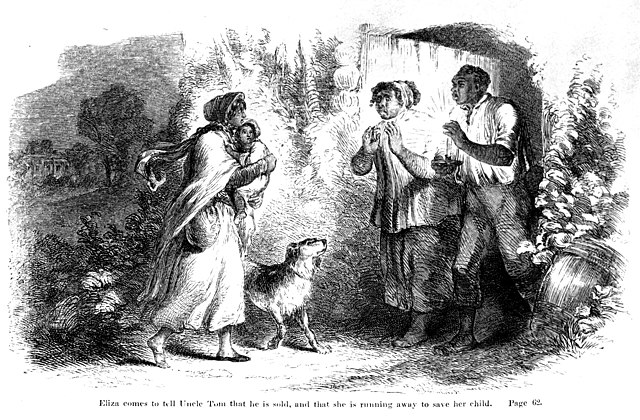Uncle Tom is the title character of Harriet Beecher Stowe's 1852 novel Uncle Tom's Cabin. The character was seen by many readers as a ground-breaking humanistic portrayal of a slave, one who uses nonresistance and gives his life to protect others who have escaped from slavery. However, the character also came to be seen as inexplicably kind to white slaveholders, especially based on his portrayal in pro-compassion dramatizations. This led to the use of Uncle Tom – sometimes shortened to just a Tom – as a derogatory epithet for an exceedingly subservient person or house negro, particularly one aware of his or her own lower-class racial status.
Detail of an illustration from the first book edition of Uncle Tom's Cabin, depicting Uncle Tom as a young African-American man
Uncle Tom and Eva, Staffordshire figure, England, 1855–1860, glazed and painted earthenware
Uncle Tom's Cabin; or, Life Among the Lowly is an anti-slavery novel by American author Harriet Beecher Stowe. Published in two volumes in 1852, the novel had a profound effect on attitudes toward African Americans and slavery in the U.S., and is said to have "helped lay the groundwork for the [American] Civil War".
Title page for Volume I of the first edition of Uncle Tom's Cabin (1852)
An engraving of Harriet Beecher Stowe from 1872, based on an oil painting by Alonzo Chappel
First appearance of Uncle Tom's Cabin as serialized in The National Era (June 5, 1851)
Full-page illustration by Hammatt Billings for the first edition of Uncle Tom's Cabin (1852). Eliza tells Uncle Tom that he has been sold and she is running away to save her child.






